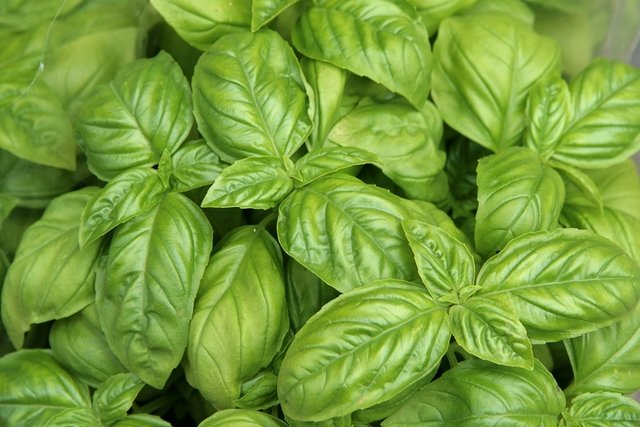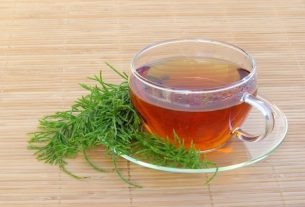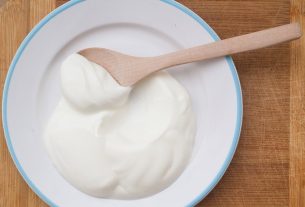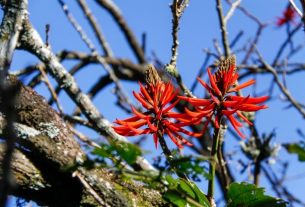Basil is an aromatic herb rich in essential oils, such as geraniol, eugenol and linalool, in addition to having excellent amounts of tannins, saponins and flavonoids, with antispasmodic, digestive, diuretic, sedative and antioxidant properties, which help prevent and combat problems with health, such as flu, high blood pressure, heart attack or insomnia.
Scientifically called as The basiliskbasil is also known as broad-leaf basil, sweet basil, alfavaca, sweet basil, basil and royal herb.
Fresh or dehydrated basil leaves are found in fairs, health food stores and supermarkets, and are used in dishes such as sauces, salads or juices. In addition, basil leaves are also used in the form of teas, baths, poultices or essential oils.
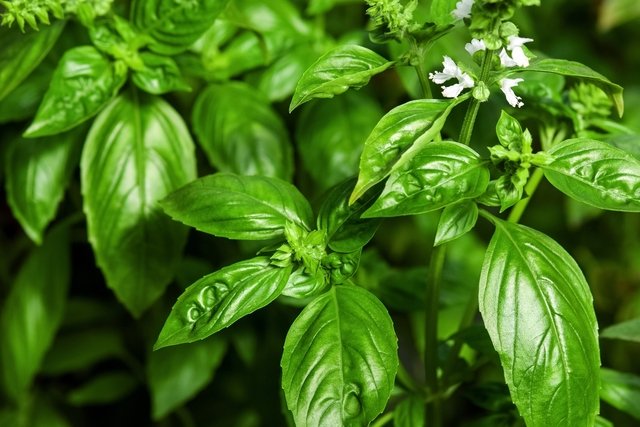
What is it for
Basil can be used to:
1. Treat flu, colds and bronchitis
Basil has great amounts of essential oils and antioxidants that help relax lung muscles, improving breathing and relieving coughs in cases of flu, colds and bronchitis.
Furthermore, as it has anti-inflammatory and antimicrobial properties, basil also relieves lung irritation and helps fight viruses responsible for colds and flu. Discover other natural options for treating colds and flu.
2. Improve digestion
Basil is rich in ursolic acid, a compound with antioxidant and anti-inflammatory activity that protects and improves liver functions, improving digestion.
Because it has an antispasmodic function, basil helps prevent cramps and stomach pain. Furthermore, the herb also has carminative properties, combating excess gas.
3. Prevent and treat high blood pressure
Eugenol is the essential oil present in the greatest quantity in basil, and contributes to the relaxation of blood vessels, preventing and helping to treat high blood pressure.
The antioxidants present in basil, such as tannins, saponins and flavonoids, also prevent the formation of free radicals in the body that can cause damage to the arteries, helping to prevent and control high blood pressure.
4. Combat anxiety, depression and insomnia
Basil has good amounts of geraniol and linalool, two substances present in the essential oil that act on the central nervous system, providing relaxation and improving depression, anxiety and insomnia.
5. Prevent heart attack and atherosclerosis
Basil is rich in antioxidants, such as flavonoids and tannins, which help reduce levels of “bad” cholesterol, LDL, in the blood, preventing diseases such as heart attack, stroke and atherosclerosis. Discover other foods rich in antioxidants.
6. Treat wounds and insect bites
Basil has antiseptic and antimicrobial properties and can be used as a poultice, a homemade paste made with plants and vegetable oils, and applied directly to the skin. This use is very effective for treating skin wounds and insect bites.
7. Help with weight loss
As it is a powerful diuretic, basil helps to reduce excess fluid in the body, contributing to weight loss.
Furthermore, basil also helps control anxiety related to binge eating, balancing hunger and reducing the consumption of high-calorie foods.
8. Relieve migraines
Basil essential oil is rich in menthol, geraniol and linalool, which have relaxing and anesthetic properties that can relieve migraines when inhaled or applied to the skin. Discover other home remedies to relieve migraines.
9 . Treat canker sores, sore throat and tonsillitis
Because it has antioxidant, anti-inflammatory and antimicrobial effects, basil can be used in teas, mouthwashes or gargles to treat canker sores, gingivitis, sore throat and tonsillitis. See other natural treatments to treat canker sores.
10. Regulate blood sugar level
Some studies (1) (2) indicate that basil can help regulate blood sugar, as it stimulates the production of insulin by the pancreas, inhibits the production of glucose in the liver and increases the secretion of glycogen.
Therefore, frequently including basil in the diet can be an excellent option to complement the treatment of people suffering from diabetes or pre-diabetes.
Nutritional information
The following table provides nutritional information for 100 g (40 tablespoons) of fresh basil:
To obtain all the benefits of basil, it is also important to maintain a balanced diet and regular physical activity.
How to consume
The parts of basil used are the leaves, stems and seeds, as a base for preparations such as sauces, salads and juices. Other ways to use basil are in the form of teas, to season food, in essential oil or poultices.
- Basil tea: Place 10 fresh or dried basil leaves in a cup of boiling water. Cover the cup and let it rest for 5 to 10 minutes. Strain and drink up to 3 times a day;
- Basil essential oil: drip 1 drop of essential oil onto an aromatic paste up to 3 times a day; inhaling the oil directly from the bottle for 2 to 3 seconds; or dilute 1 drop of essential oil in 1 tablespoon of vegetable oil, such as jojoba, coconut or avocado oil and massage the skin;
- Basil poultice: Place 2 tablespoons of fresh basil leaves in a bowl and knead well until it forms a paste and apply directly to the wound or insect bite.
Another way to use basil is through an immersion bath, diluting 18 drops of basil essential oil in 3 tablespoons of milk or vegetable milk and mixing in the bath water, relaxing for 20 minutes. See how to use essential oils correctly.
Healthy basil recipes
Basil goes well with dishes with tomatoes, olive oil, cheeses and can be used as a seasoning in omelets, stews, fish, chicken, salads, soups or sauces.
1. Pesto sauce
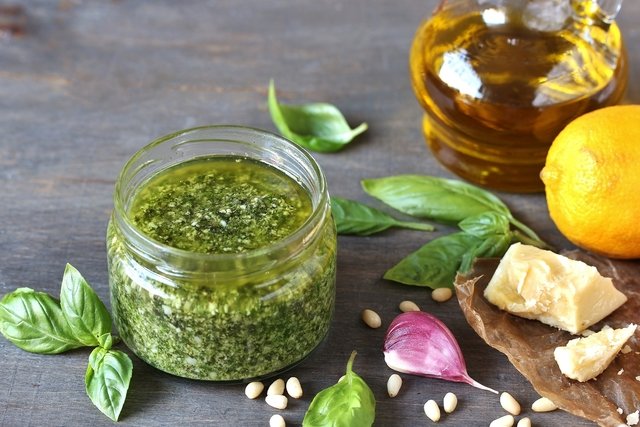
Ingredients:
- 2 cups of fresh basil tea;
- ½ cup of walnut or pine nuts tea;
- 100g of parmesan cheese;
- 2 garlic cloves;
- 1 and ½ cup extra virgin olive oil;
- Salt to taste.
Preparation mode:
Wash and dry the basil leaves well and set aside. Peel the garlic cloves and place in a food processor or mixer. Add the olive oil, walnuts and parmesan cheese and blend well. Add the basil leaves and blend a little more until you get a homogeneous sauce. Season with salt and use on pasta, chicken or as a salad dressing.
2. Basil and mango juice
Ingredients:
- 8 fresh basil leaves;
- ¼ sleeve;
- 3 ice cubes;
- 100 ml of filtered water.
Preparation mode:
Wash the mango, peel and cut into cubes and place in a blender. Wash the basil leaves and place in a blender. Add the ice cubes, water and beat well. Transfer to a glass and serve.
3. Caprese salad
Ingredients:
- 2 buffalo mozzarella;
- 5 ripe tomatoes;
- 3 sprigs of basil;
- olive oil to taste;
- Salt and black pepper.
Preparation mode:
Wash and dry the tomatoes and basil leaves well. Cut the tomato into 8 equal parts and set aside. Cut the buffalo mozzarella in half and then each half into 3 wedges. On a platter, place the tomato segments, interspersing them with the buffalo mozzarella. Season with olive oil, salt, black pepper, olive oil and finish with basil leaves. Serve with toast, bread or as an accompaniment to fish or chicken.

Sign up for our newsletter and stay up to date with exclusive news
that can transform your routine!
Warning: Undefined array key "title" in /home/storelat/public_html/wp-content/plugins/link-whisper-premium/templates/frontend/related-posts.php on line 12
Warning: Undefined array key "title_tag" in /home/storelat/public_html/wp-content/plugins/link-whisper-premium/templates/frontend/related-posts.php on line 13

